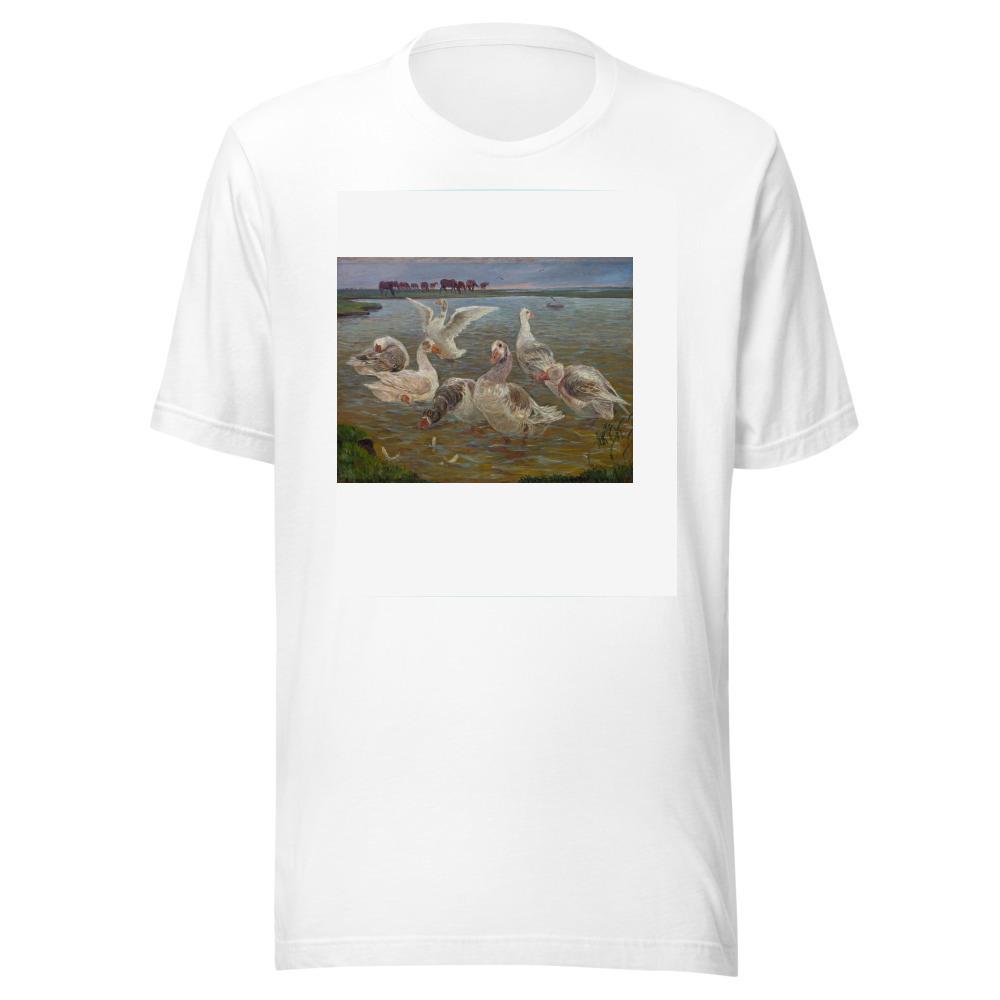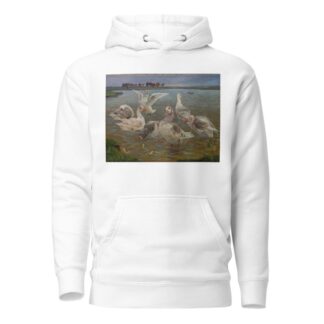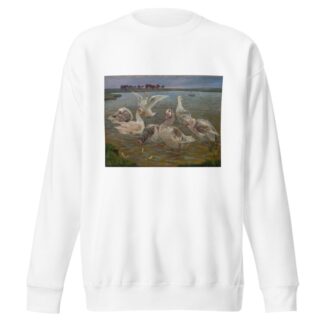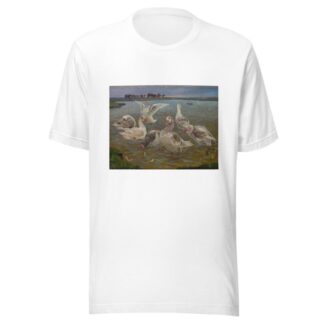Description
Les Oies by Theodor Philipsen printed on a T-Shirt
About the T-Shirt
Regular fit
Standard length, the fabric easily gives into movement
Casual wear
A classic, everyday option loved by our customers
Side-seamed
Constructed by sewing two parts together, creating a fitted look
The Unisex Staple T-Shirt feels soft and light with just the right amount of stretch. It’s comfortable and flattering for all. We can’t compliment this shirt enough–it’s one of our crowd favorites, and it’s sure to be your next favorite too!
- Solid colors are 100% Airlume combed and ring-spun cotton
- Ash color is 99% combed and ring-spun cotton, 1% polyester
- Heather colors are 52% combed and ring-spun cotton, 48% polyester
- Athletic and Black Heather are 90% combed and ring-spun cotton, 10% polyester
- Heather Prism colors are 99% combed and ring-spun cotton, 1% polyester
- Fabric weight: 4.2 oz./yd.² (142 g/m²)
- Pre-shrunk fabric
- 30 singles
- Side-seamed construction
- Tear-away label
- Shoulder-to-shoulder taping
- Blank product sourced from Nicaragua, Mexico, Honduras, or the US
Theodor Philipsen (1840-1920)
Theodor Esbern Philipsen was a Danish painter of Jewish ancestry; known for landscapes and animal portraits. He also did small figures in wax and clay.
He was born to a cultured merchant family and learned to draw at an early age. At first, however, he was primarily interested in animals, so he went to study agriculture at his uncle’s estate near Slangerup. In the 1860s, one of his brothers introduced him to the painter, Hans Smidth, which made him decide to become an artist. He began his studies at the Royal Danish Academy of Fine Arts with Carl Bøgh and later came under the influence of Frederik Vermehren.
He was also familiar with the animal portraits of Johan Thomas Lundbye and the 17th-century painter Paulus Potter. In 1873, he was awarded the Neuhausenske Prize [da] for his painting of horses swimming. In the 1880s, he began painting en plein aire and began to show some elements of Impressionism.
At the age of thirty-five, concerned that his images were not realistic enough, he went to Paris to study with Léon Bonnat. There, he practiced intensive croquis drawing; to capture the basics of position and movement. He also obtained knowledge of the radical trends in French art through his friend, Rémy Cogghe, with whom he spent some time in Spain and Italy. This all came together in a distinctive style. His favorite places for painting were Saltholm and Amager.
In the winter of 1884-1885, Paul Gauguin made a visit to Copenhagen. Philipsen approached him for some advice and was shown how to use small brushes with quick, firm strokes. They remained friends for life.
In 1890, he received the Eckersberg Medal. Around 1905, he began to suffer from an eye disease that interfered with his ability to paint. In 1915, he was awarded the Thorvaldsen Medal. He is generally credited with establishing Impressionism as an important aspect of Danish painting.






Reviews
There are no reviews yet.